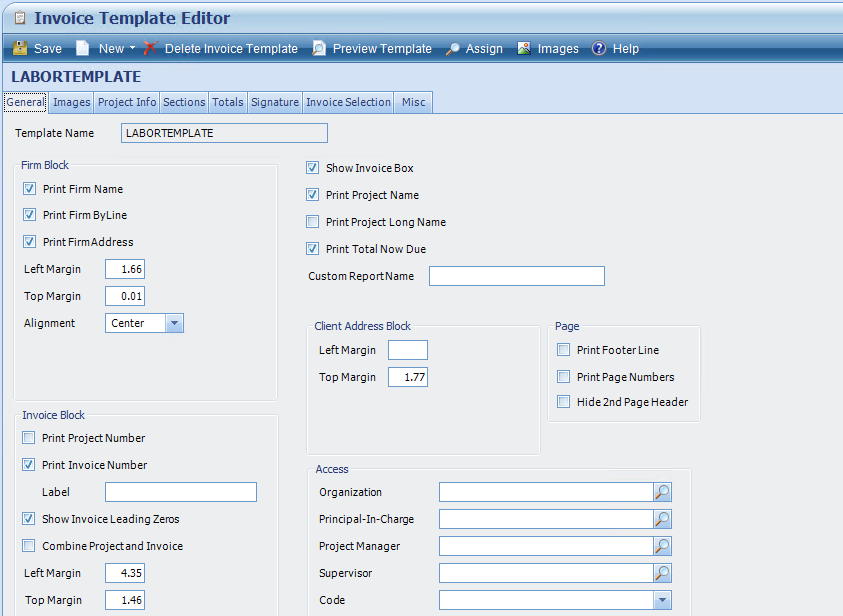“If you are planning an upgrade to Vision 7.6 soon and have existing custom invoices, this is a good time to review them and decide whether your firm should move away from custom invoices or continue maintaining them.”
Overview
Deltek Vision Custom Invoice vs. Standard Invoice – When SQL Reporting Services (SSRS) was first introduced as the reporting platform for Vision 6.x, there was a huge push to develop custom reports for Vision. These were typically for unique reporting requirements that Vision Standard reports simply couldn’t produce. But another very popular custom report was the Custom Invoice.
Often a client or project may require a unique invoice design or information that the Standard Vision invoice cannot produce and to reduce manual effort spent editing invoices outside of Vision, a custom invoice makes a lot of sense.
There is also a flip side to the custom invoice in that the back end Invoice Reports (the invoice report is actually 1 report with 32 sub-reports) will often change with each new release of Vision. As new features and functionality are added to Vision, the Invoice Template Editor tool also changes and so too must the back end reports.
Common Customizations Now Built-in
Over the years since Vision 6.x came out there have been continuous improvements made to the Vision Invoice and the Invoice Template Editor. Many of these improvements were likely borne out of enhancement requests or from Deltek seeing that many users were trying to achieve them through custom invoices. Here are just a small sampling:
- Ability to show/hide labels, separating lines and totals
- Better control over totals for each section as well as grand total before taxes
- Ability to include virtually any Project Info Center field on the invoice, including custom fields
- Better handling of images for logos, etc.
- Support for HTML formatted text
All of the above are now commonly used built-in features that, prior to being added to Vision, could only be achieved by way of a customization to the standard invoice.
The Cost of Keeping Older Custom Invoices
Anyone with a custom invoice will know that there is a price that was invested in building it in the first place, so why would you simply get rid of it? Well one must consider the cost of keeping it through successive version upgrades and that requires assessing some common issues with legacy custom invoices:
- SSRS Schema Changes – As Vision transitions to newer versions of the SSRS platform, reports will need to be updated to the latest compatible schema (note they now have a built-in tool for this)
- New Features – As new features for invoicing become available, if you want to take advantage of them it’s likely that you will need to re-build the custom invoices using the latest standard invoice report .RDL files.
- Data Changes – Sometimes changes are made to the underlying data that drives the Invoice and if you’re report is referencing old field names or report parameters, your custom invoice may stop working after an upgrade.
- Layout Changes – The overall layout of the invoice report/sub-reports has evolved over successive versions. Will your customization fit into those new constructs?
- Documentation – If the original customizations were not properly documented, or the original consultant that did that work, it can become difficult to re-build.
- Cloud – If you are moving to or have already move to the DeltekFirst Cloud, maintaining and updating custom reports is not as simple as with an on-premise system.
There are a number of things to consider when deciding whether or not to keep an older custom invoice, but as a general rule you need to weigh the cost of using your customization vs. taking advantage of the latest Vision has to offer. Maintaining even simple cosmetic customizations through many Vision upgrades will become costly. If those changes can be achieved through the Invoice Template editor, then it is worth considering to move away from a custom invoice.
Should You Avoid Custom Invoices?
Simply put NO. There are many situations where a custom invoice is the only way to achieve a desired look or to bring data onto the invoice in a non-standard way or even to bring in data that is not directly related to the invoice.
Conclusion
Will the need for custom invoices go away completely? Not likely anytime soon however, if you are planning an upgrade to Vision 7.6 soon and have existing custom invoices, this is a good time to review them and decide whether this is the right time to move away from them or continue maintaining them. My experience has been that many of the custom invoices out there were done for simple cosmetic changes which may be possible from the standard invoice and Invoice Template Editor.
If you would like to learn more or have us take a look at your current custom invoices send us an e-mail: [email protected]

